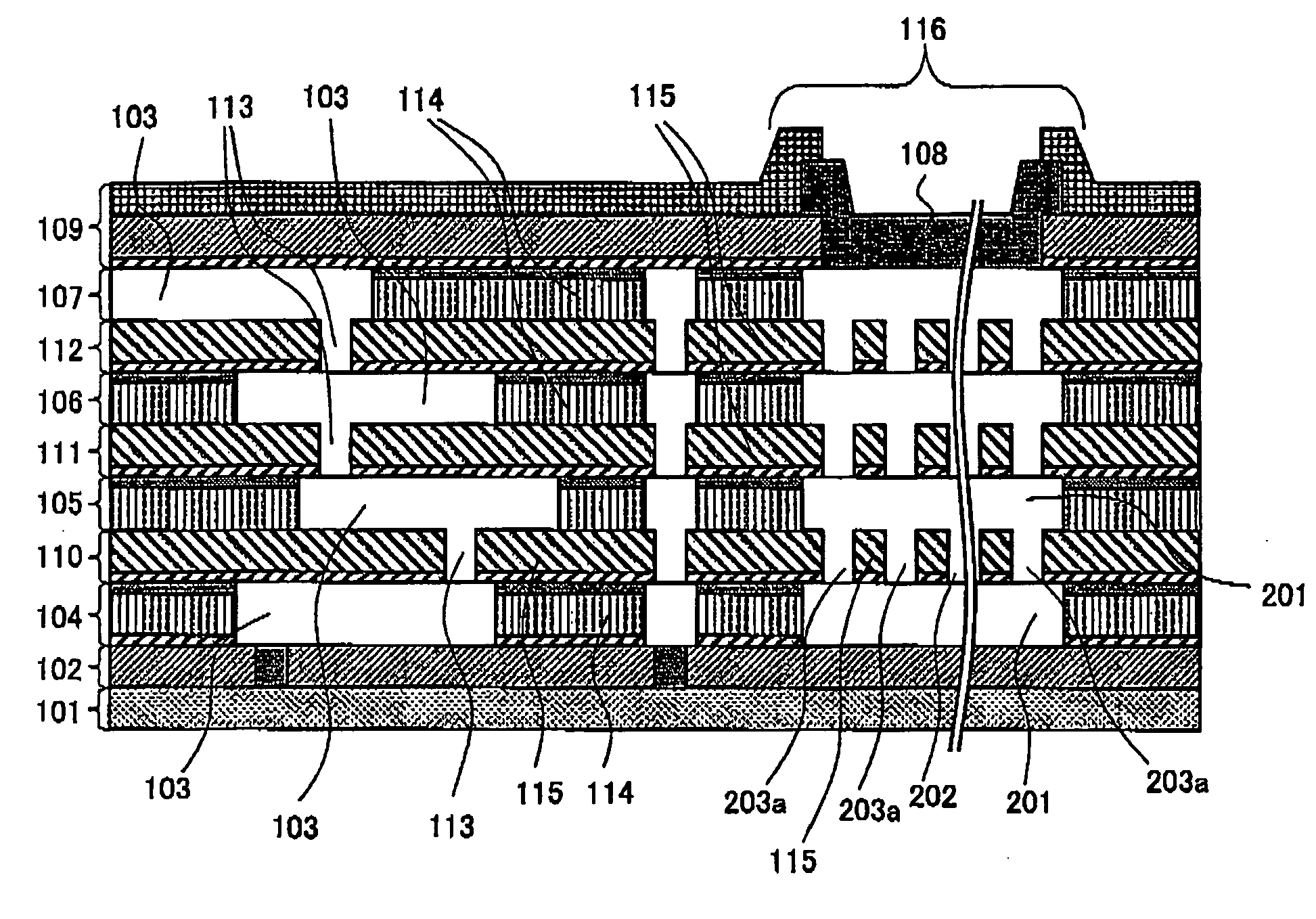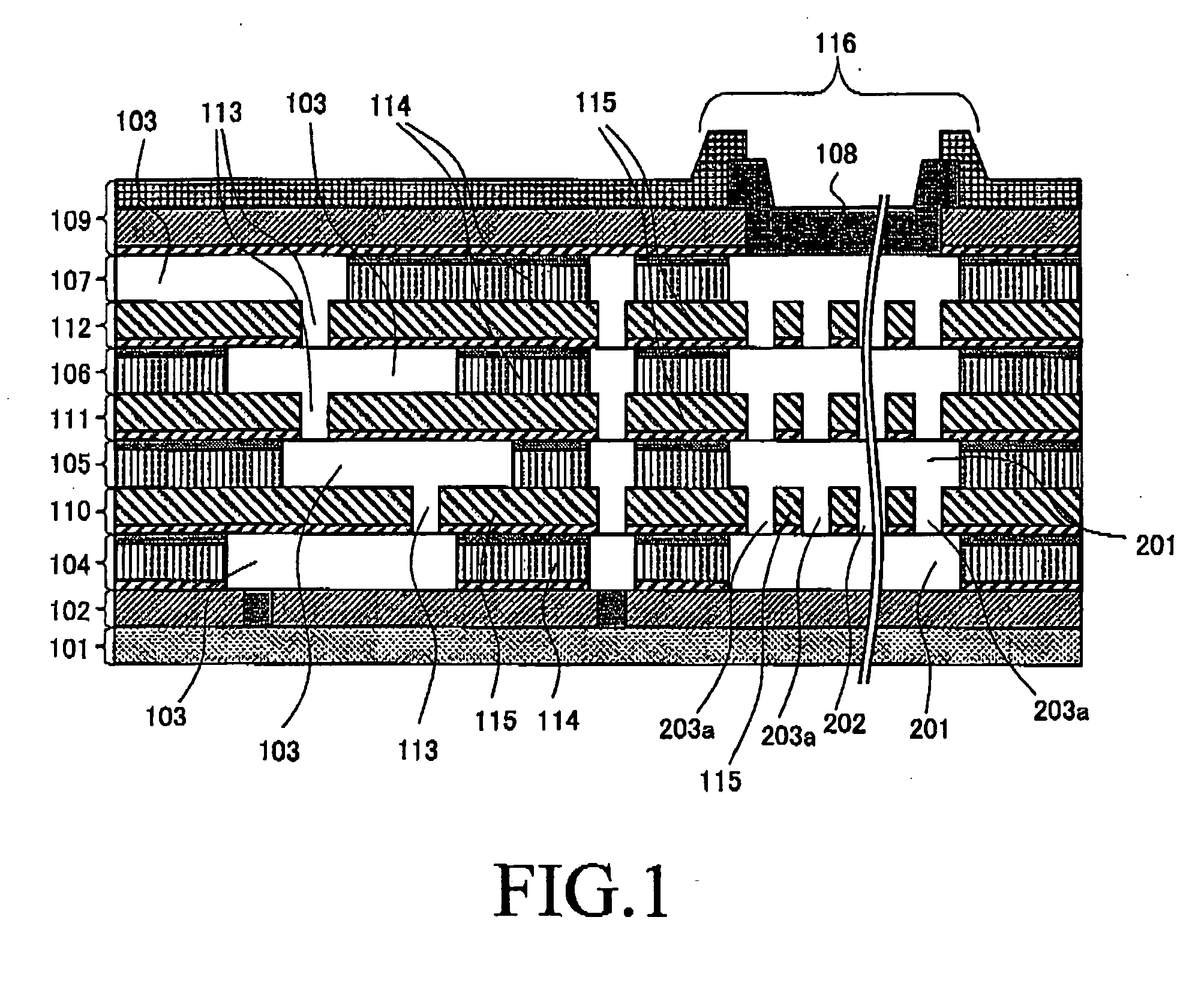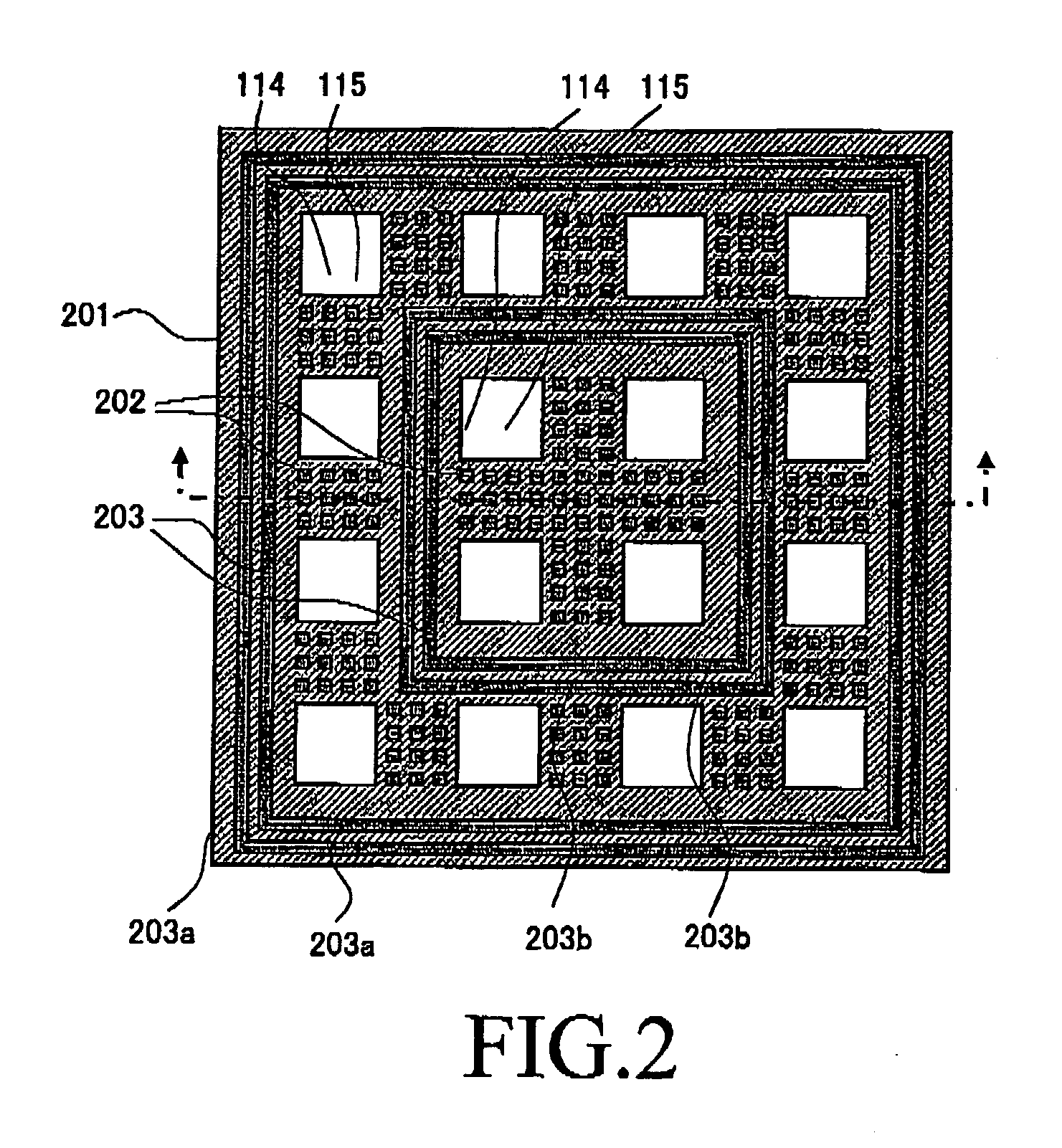Semiconductor device
a technology of semiconductor devices and semiconductor films, applied in semiconductor devices, semiconductor/solid-state device details, electrical apparatus, etc., can solve the problems of low mechanical strength and hardness of the insulation film, and the film itself is peeled off or broken by impact, etc., to achieve great merit for the industry
- Summary
- Abstract
- Description
- Claims
- Application Information
AI Technical Summary
Benefits of technology
Problems solved by technology
Method used
Image
Examples
first embodiment
[0064]FIG. 1 is a cross-sectional view showing a semiconductor device according to an embodiment of the invention.
[0065] More specifically, the semiconductor device comprises a front end layer 101 in which diffusion layers, gate electrodes, and transistors are formed on a semiconductor substrate. The front end layer 101 is covered, across a contact plug layer 102, sequentially with interconnect layers 104, 105, 106, and 107 including interconnects 103 provided for connection in the same layer. On top, adhesion / barrier metal, pad connecting aluminum (Al) 108, and a passivation layer 109 are placed. The region below the pad connecting aluminum 108 will be referred to as “subpad region”, and the other region as “extrapad region”.
[0066] It should be noted that in an actual semiconductor device, a predetermined number of interconnect layers and via layers are repeatedly stacked to form a multilayer interconnect. However, it is omitted in FIG. 1 for simplicity.
[0067] In this semiconduc...
second embodiment
[0085] Next, the second embodiment of the invention will be described.
[0086]FIG. 10 is a perspective plan view illustrating the planar structure of a relevant part of a semiconductor device according to this embodiment.
[0087] More specifically, in this specific example, a plurality of bonding pads are located around the chip. A plurality of loop-shaped chip periphery metal interconnects 1002 are located along the periphery of the chip so as to surround the inside 1001 of the chip including subpad regions 116 underlying these bonding pads. The chip periphery metal interconnect 1002 is provided for all the layers including low-k insulating material.
[0088]FIG. 11 is a schematic view showing a cross-sectional structure of each chip periphery metal interconnect 1002.
[0089] The interconnect layers 104, 105, 106, and 107 are provided with interconnects 1101, respectively. The via layers 110, 111, and 112 are provided with interconnect layers 1102, respectively. In addition, each of the...
PUM
 Login to View More
Login to View More Abstract
Description
Claims
Application Information
 Login to View More
Login to View More - R&D
- Intellectual Property
- Life Sciences
- Materials
- Tech Scout
- Unparalleled Data Quality
- Higher Quality Content
- 60% Fewer Hallucinations
Browse by: Latest US Patents, China's latest patents, Technical Efficacy Thesaurus, Application Domain, Technology Topic, Popular Technical Reports.
© 2025 PatSnap. All rights reserved.Legal|Privacy policy|Modern Slavery Act Transparency Statement|Sitemap|About US| Contact US: help@patsnap.com



